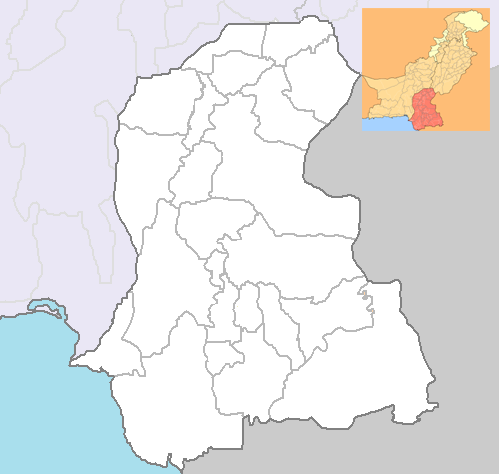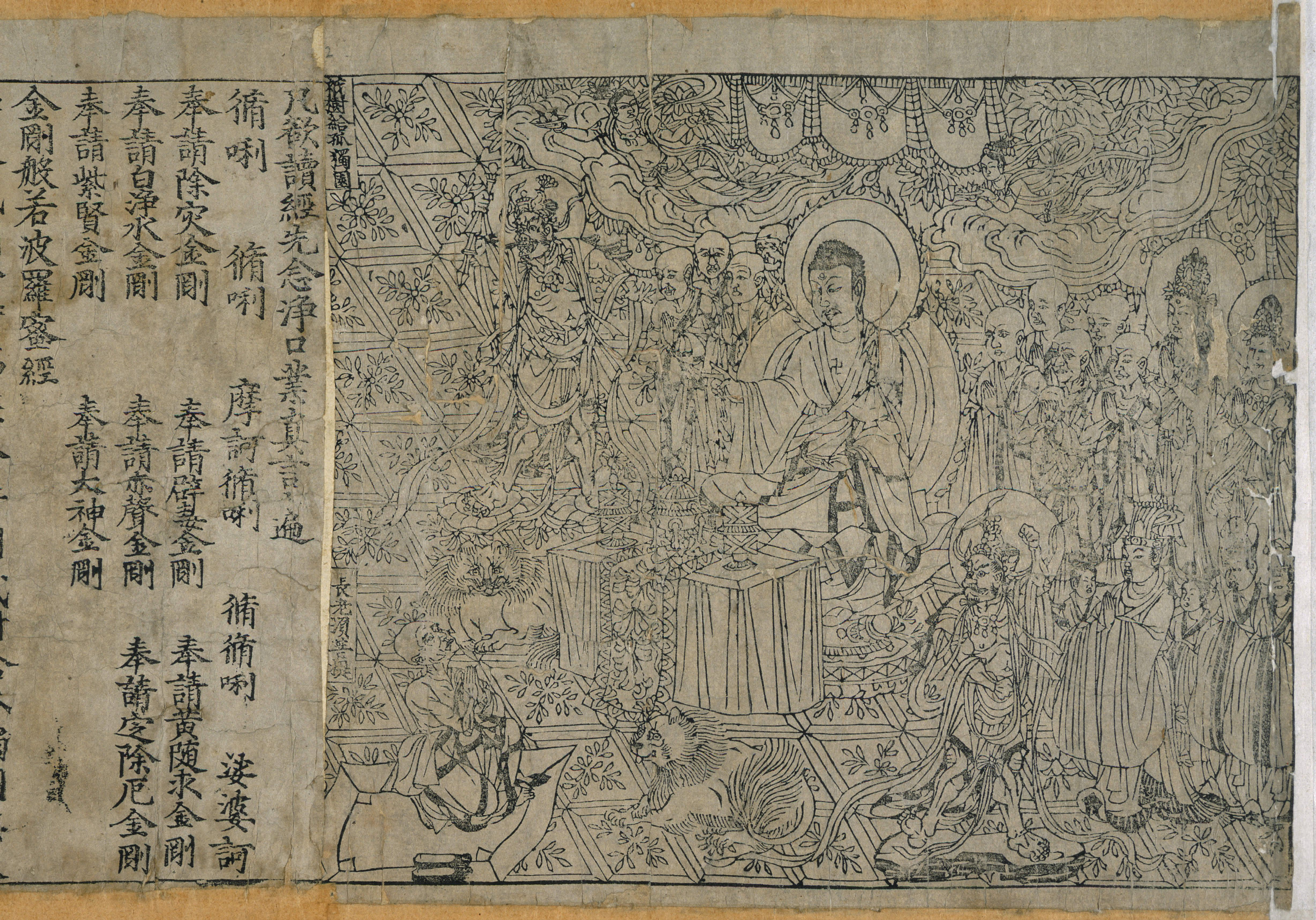|
Ajrak
Ajrak ( sd, اجرڪ), also known as Ajrakh, is a unique form of blockprinting found mostly in Sindh, Pakistan and Ajrakhpur, Kutch district, India. These shawls display special designs and patterns made using block printing by stamps. Over the years, ajraks have become a symbol of the Sindhi culture and traditions. Ajrak print is also famous in neighbouring areas of India in the state of Gujarat due to their influence from Indus Valley civilization in Sindh, Pakistan. A later-on Saraiki version of Ajrak shawl was created called, Sajarak is found in South Punjab of Pakistan. Sajarak is mostly of cyan color while the simple Ajrak is of red and black. Etymology The Sindhi word ajrak (اجرڪ) comes from Persian language ajar or ajor (اجر) meaning brick and -ak (ک) meaning little. In Persian -ak is a suffix which forms the diminutive. History Early human settlements in the lower Indus Valley found a way of cultivating and using ''Gossypium arboreum'' commonly known as '' ... [...More Info...] [...Related Items...] OR: [Wikipedia] [Google] [Baidu] |
Sajarak
Sajarak also known as Saraiki ajrak ( skr, سرائیکی اجرک) is a unique form of blockprinting found mostly in South Punjab in Pakistan. It has become a symbol of the Saraiki culture and traditions. On 6 March, Saraiki Cultural Day is celebrated. Description Although the origins of Sajarak is disputed among Saraikis themselves since most consider it as a form of Ajrak. Sajarak is name derived from the original Ajrak which is the Sindhi version of the blockprinted shawls and tiles which are found in Sindh, Pakistan. Sajarak can be called the identity of Saraikistan and Saraki people. Sajrak is a symbol of pride and respect for men and glory for women. Saraiki people also present Ajrak as gesture of hospitality to their guests. These shawls display special designs and patterns made using block printing by stamps. Common colours used while making these patterns may include but are not limited to blue, red, black and green. Cyan colour is the dominating colour in S ... [...More Info...] [...Related Items...] OR: [Wikipedia] [Google] [Baidu] |
Sindhi Culture
The Culture of Sindhi ( sd, سنڌ جي ثقافت) has its roots in the Indus Valley civilization. Sindh has been shaped by the largely desert region, the natural resources it had available, and continuous foreign influence. The Indus River, Indus or Sindhu River that passes through the land, and the Arabian Sea (that defines its borders) also supported the seafaring traditions among the local people. The local climate also reflects why the Sindhis have the Sindhi language, language, folklore, traditions, customs and lifestyle that are so different from the neighboring regions. The Sindhi culture is also practiced by the Sindhi diaspora. History The roots of Sindhi culture go back to the distant past. Archaeological research during 19th and 20th centuries showed the roots of social life, religion and culture of the people of the Sindh: their agricultural practices, traditional arts and crafts, customs and tradition and other parts of social life, going back to a mature Indus val ... [...More Info...] [...Related Items...] OR: [Wikipedia] [Google] [Baidu] |
Sindh
Sindh (; ; ur, , ; historically romanized as Sind) is one of the four provinces of Pakistan. Located in the southeastern region of the country, Sindh is the third-largest province of Pakistan by land area and the second-largest province by population after Punjab. It shares land borders with the Pakistani provinces of Balochistan to the west and north-west and Punjab to the north. It shares International border with the Indian states of Gujarat and Rajasthan to the east; it is also bounded by the Arabian Sea to the south. Sindh's landscape consists mostly of alluvial plains flanking the Indus River, the Thar Desert in the eastern portion of the province along the international border with India, and the Kirthar Mountains in the western portion of the province. The economy of Sindh is the second-largest in Pakistan after the province of Punjab; its provincial capital of Karachi is the most populous city in the country as well as its main financial hub. Sindh ... [...More Info...] [...Related Items...] OR: [Wikipedia] [Google] [Baidu] |
Matiari
Matyari or Matiari ( sd, مٽیاري, ur, ) is a city located in Sindh, Pakistan. It is north of Hyderabad on N-5 National Highway. Matiari is also the district headquarter of Matiari District. Matiari word is derived from two Sindhi words ''Mat'' and ''yari'', which means friendship with earthen water pots. The Dargah of Pir Pir or PIR may refer to: Places * Pir, Kerman, a village in Kerman Province, Iran * Pir, Satu Mare, commune in Satu Mare County, Romania Religion * Pir (Alevism), one of the 12 ranks of Imam in Alevism * Pir (Sufism), a Sufi teacher or spiritu ... Sayed sakhi Hashim Shah badshah is located in Matiari town. Matiari has three talukas, they are Matiari, Bhitshah and Saeedabad respectively. Matiari is known for its ice-Cream and Ajrak (a Sindhi dressing). References External links Populated places in Sindh Matiari District {{Sindh-geo-stub ... [...More Info...] [...Related Items...] OR: [Wikipedia] [Google] [Baidu] |
Woodblock Printing
Woodblock printing or block printing is a technique for printing text, images or patterns used widely throughout East Asia and originating in China in antiquity as a method of printing on textiles and later paper. Each page or image is created by carving a wooden block to leave only some areas and lines at the original level; it is these that are inked and show in the print, in a relief printing process. Carving the blocks is skilled and laborious work, but a large number of impressions can then be printed. As a method of printing on cloth, the earliest surviving examples from China date to before 220 AD. Woodblock printing existed in Tang China by the 7th century AD and remained the most common East Asian method of printing books and other texts, as well as images, until the 19th century. '' Ukiyo-e'' is the best-known type of Japanese woodblock art print. Most European uses of the technique for printing images on paper are covered by the art term woodcut, except for th ... [...More Info...] [...Related Items...] OR: [Wikipedia] [Google] [Baidu] |
Hyderabad, Sindh
Hyderabad ( Sindhi and ur, ; ) is a city and the capital of Hyderabad Division in the Sindh province of Pakistan. It is the second-largest city in Sindh, and the eighth largest in Pakistan. Founded in 1768 by Mian Ghulam Shah Kalhoro of the Kalhora Dynasty, Hyderabad served as a provincial capital until the British transferred the capital to Bombay presidency in 1840. It is about inland of Karachi, the largest city of Pakistan, to which it is connected by a direct railway and M-9 motorway. Toponymy The city was named in honour of Ali, the fourth caliph and cousin of the Prophet Muhammad. Hyderabad's name translates literally as "Lion City"—from ''haydar'', meaning "lion," and '' ābād'', which is a suffix indicating a settlement. "Lion" references Ali's valour in battle, and so he is often referred to as ''Ali Haydar'', roughly meaning "Ali the Lionheart," by South Asian Muslims. History Founding The River Indus was changing course around 1757, resulting i ... [...More Info...] [...Related Items...] OR: [Wikipedia] [Google] [Baidu] |
Sukkur
Sukkur (; ) is a city in the Pakistani province of Sindh along the western bank of the Indus River, directly across from the historic city of Rohri. Sukkur is the third largest city in Sindh after Karachi and Hyderabad, and 14th largest city of Pakistan by population. New Sukkur was established during the British era alongside the village of Sukkur. Sukkur's hill, along with the hill on the river island of Bukkur, form what is sometimes considered the "Gate of Sindh". Etymology The name Sukkur may derive from the Arabic word for "sugar," ''shakkar'', in reference to the sugarcane fields that have historically been abundant in the region. This may be an allusion to the relative prosperity of the region at the time. Others have suggested the name may derive from the word ''Suukh'', derived from a Sindhi word for "comfort." History The region around Sukkur has been inhabited for millennia. The ruins of Lakhan-jo-daro, located near an industrial park on the outskirts of ... [...More Info...] [...Related Items...] OR: [Wikipedia] [Google] [Baidu] |
Moro, Pakistan
Moro ( Sindhi:مورو, ur, ) is a city in the Naushahro Feroze District, of Sindh, Pakistan. The city is administratively subdivided into 12 Union councils. and is located on National highway (N5) in the centre of Sindh at an altitude of 28 m (95 ft) and is 12 km of the Indus River. It is the largest city in Naushahro Feroze District with a population of about 368,789 as per 2017 Census of Pakistan The 2017 Census of Pakistan was a detailed enumeration of the Pakistani population which began on 15 March 2017 and ended on 25 May 2017. It was the first census taken in the country in the 21st century, nineteen years after the previous one in .... Educational Institutes *Govt Mehran Degree College *Govt High School Moro Town campus *Govt Girl High School *Govt Girls Degree College *Bahria Foundation College *The Educators - A Project of BeaconhouseIQRAP.H.S School Moro *Intelligentsia Science College *Habibia School of Hope. A school for orphans started by the ... [...More Info...] [...Related Items...] OR: [Wikipedia] [Google] [Baidu] |
Bhit
Bhit or Bhit Shah ( sd, ڀٽ شاهه) is a small town located in Matiari District, Sindh, Pakistan. The town is best known as the location of the shrine to the Sindhi Sufi poet, Shah Abdul Latif Bhittai, who gave his name to the town (Bhttai sd, ڀٽائي). Passing along the road that leaves Haala for Hyderabad, beyond the shrubs there are a solitary group of large white mounds, which form hills known as Bhit in Sindhi. Shrine of Abdul Latif Bhittai The Shrine of Shah Abdul Latif Bhittai, located in the centre of town, was built by Mian Ghulam Shah Kalhoro, who ruled over Sindh during the late 1700s. Kalhoro ordered the shrine to be built in 1772. It is a structure covered with traditional Sindhi ''Kashi'' tiles, glazed in the colours such as blue and turquoise. The final resting place of Shah Latif is under the main-dome of the building. His grave is enclosed by a carved wooden screen and lies under a fresco. Musicians are often seen serenading the constant trickle of devo ... [...More Info...] [...Related Items...] OR: [Wikipedia] [Google] [Baidu] |
Tutankhamen
Tutankhamun (, egy, twt-ꜥnḫ-jmn), Egyptological pronunciation Tutankhamen () (), sometimes referred to as King Tut, was an Egyptian pharaoh who was the last of his royal family to rule during the end of the Eighteenth Dynasty (ruled in the conventional chronology) during the New Kingdom of Egyptian history. His father is believed to be the pharaoh Akhenaten, identified as the mummy found in the tomb KV55. His mother is his father's sister, identified through DNA testing as an unknown mummy referred to as " The Younger Lady" who was found in KV35. Tutankhamun took the throne at eight or nine years of age under the unprecedented viziership of his eventual successor, Ay, to whom he may have been related. He married his paternal half-sister Ankhesenamun. During their marriage they lost two daughters, one at 5–6 months of pregnancy and the other shortly after birth at full-term. His names—''Tutankhaten'' and ''Tutankhamun''—are thought to mean "Living image of A ... [...More Info...] [...Related Items...] OR: [Wikipedia] [Google] [Baidu] |





